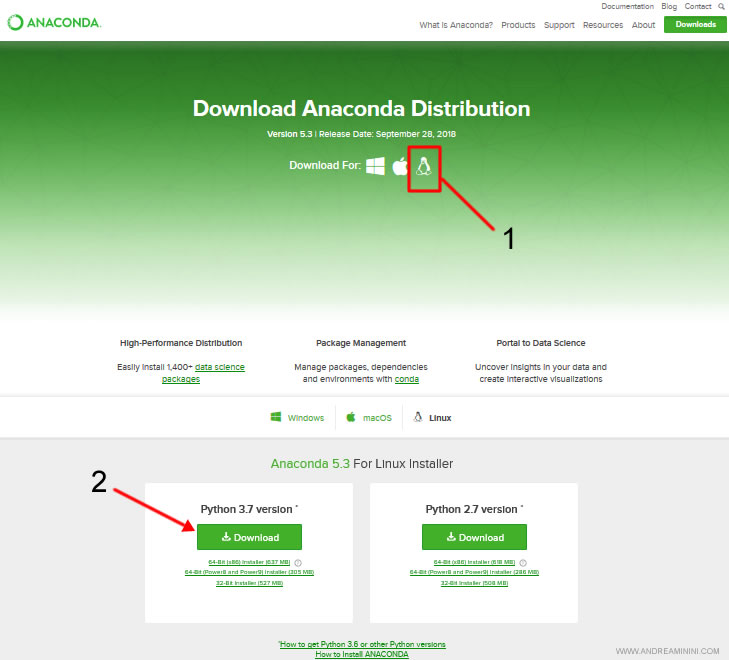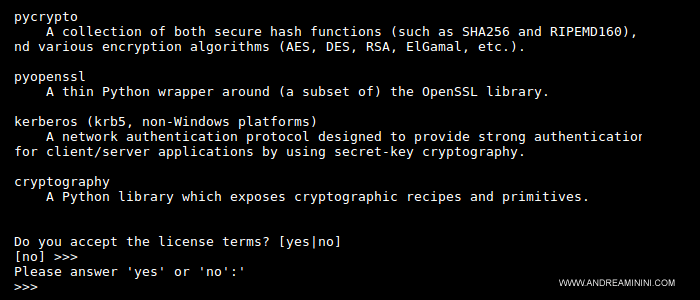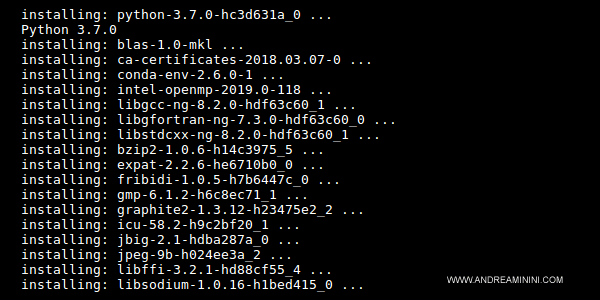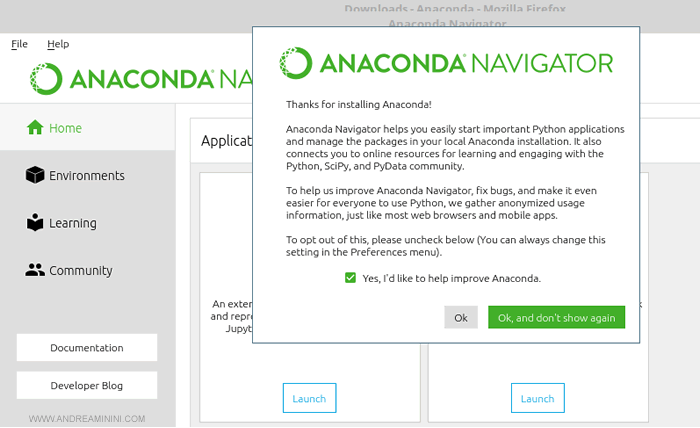How to Install Anaconda on Linux
To set up the Anaconda operating environment and Python's scientific libraries on a Linux PC (Ubuntu, Debian, Mint, etc.), I visit the official Anaconda website.
Next, I click on Download at the top right corner.
The "Download" button may be relocated over time. If it's no longer in the top right corner, I'll search for the "Download" option on the website.

In the following screen, I select the Linux operating system version.
Then, I click on Download and grab the installer for the latest Python version.
In this case, I choose Python 3.7.

Once the download completes, I open the command line.
Then, I type
bash /path/Anaconda3-5.3.0-Linux-x86_64.sh
Here, path is the directory from root to where I downloaded the Anaconda installer.
Note. To install Anaconda, at least 5GB of free space is needed on the hard disk. Otherwise, the installation will halt.
To start the installation, I need to read the license.
I press Enter to continue.

At the end of the terms of use, I type YES to agree.
Then, I press Enter.

Now, the installer asks where I want to install Anaconda.
Here, I press Enter to accept the default directory suggested by the installer.

At this point, the actual installation begins.
The installer copies and installs various libraries of the Anaconda operating environment on Linux.

The library installation takes a few minutes.
When it's done, the installer asks if I want to initialize Anaconda in bash.
I type yes and press Enter.

Once the installation is complete, the message "Thank you for installing Anaconda!" appears.

Installation of Anaconda is complete
I exit BASH by closing the console terminal.
I reopen the terminal and start Anaconda's initialization process.
I replace <PATH_TO_CONDA> with the directory where I've installed Anaconda.
source <PATH_TO_CONDA>/bin/activate
Finally, I kick off the initialization.
conda init
Now everything is set up and ready for working with Anaconda.
To launch Anaconda, I open the Linux terminal again and type
anaconda-navigator
Then, I press Enter.
If all goes well, the program should start.
At first launch, I click on OK in the window.

The Anaconda operating environment interface opens.
Now, I can begin working with it.
